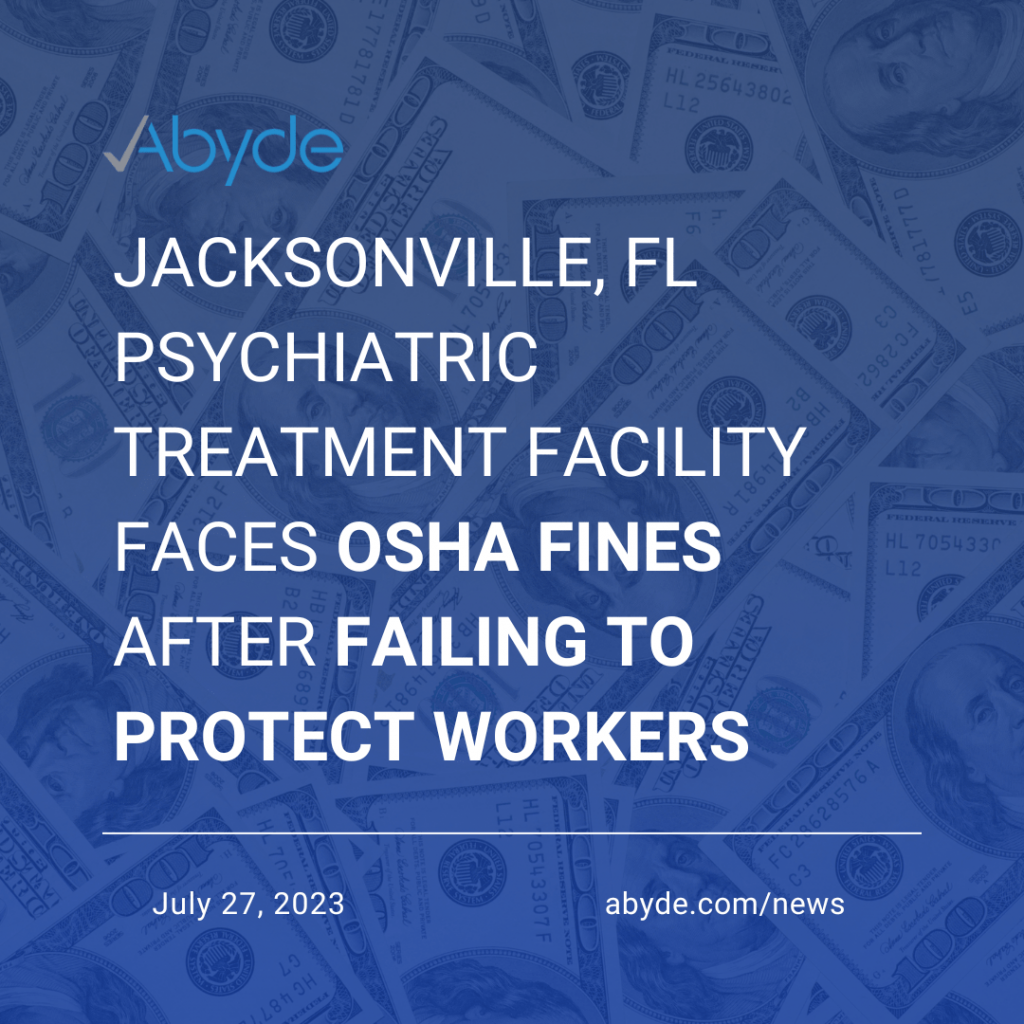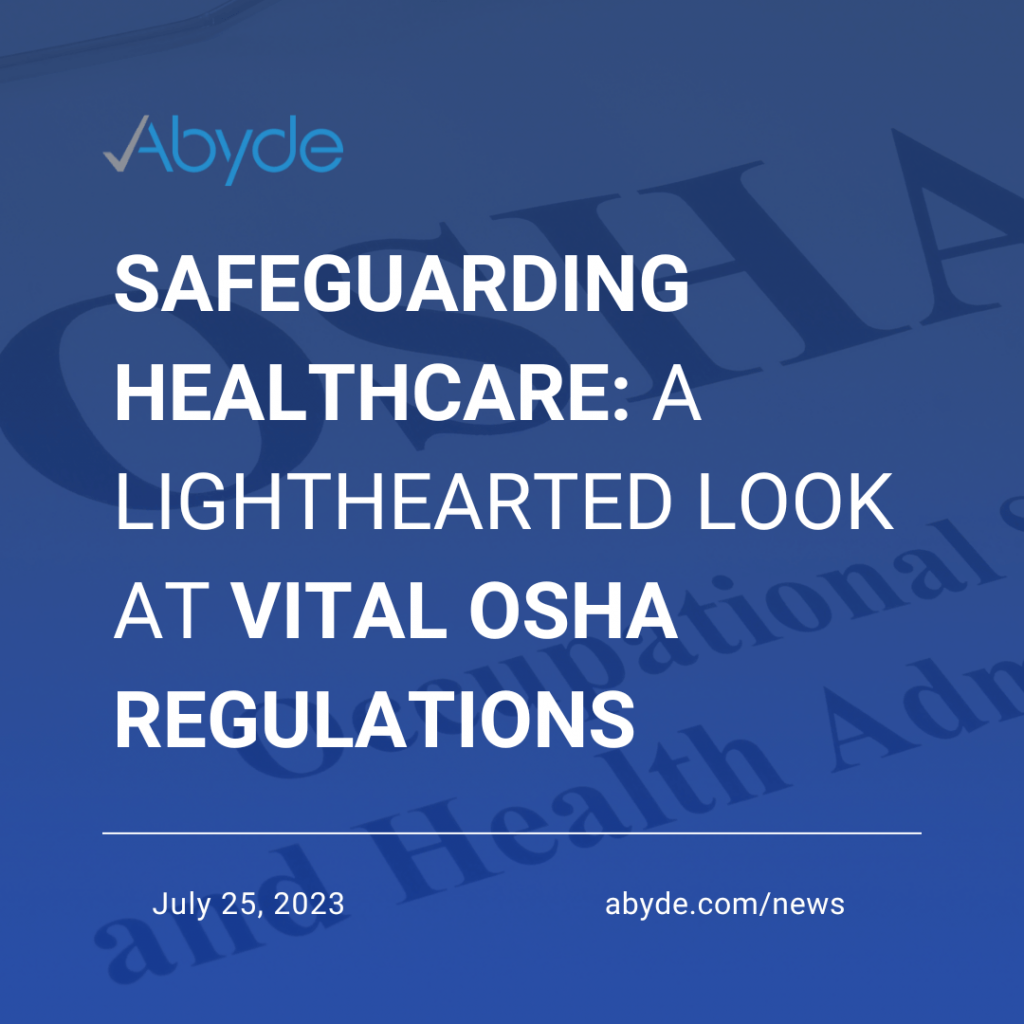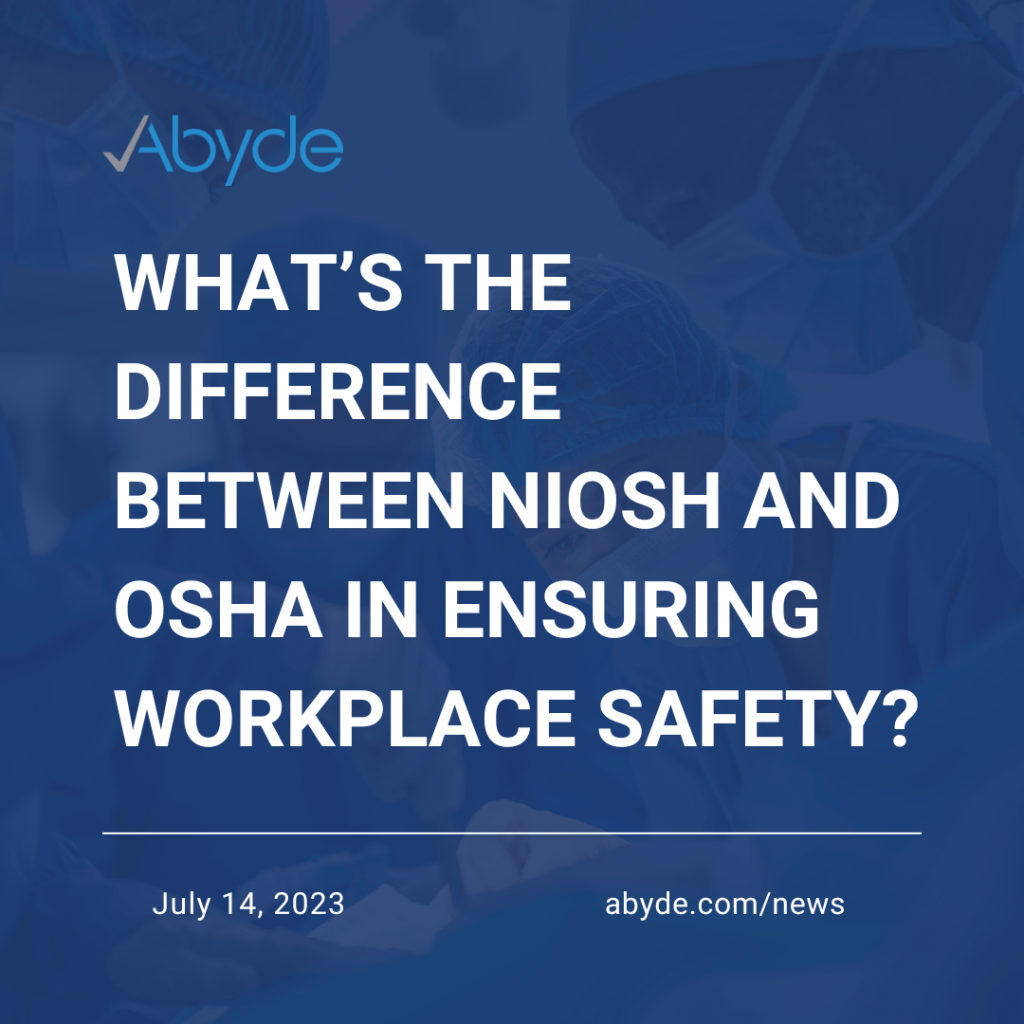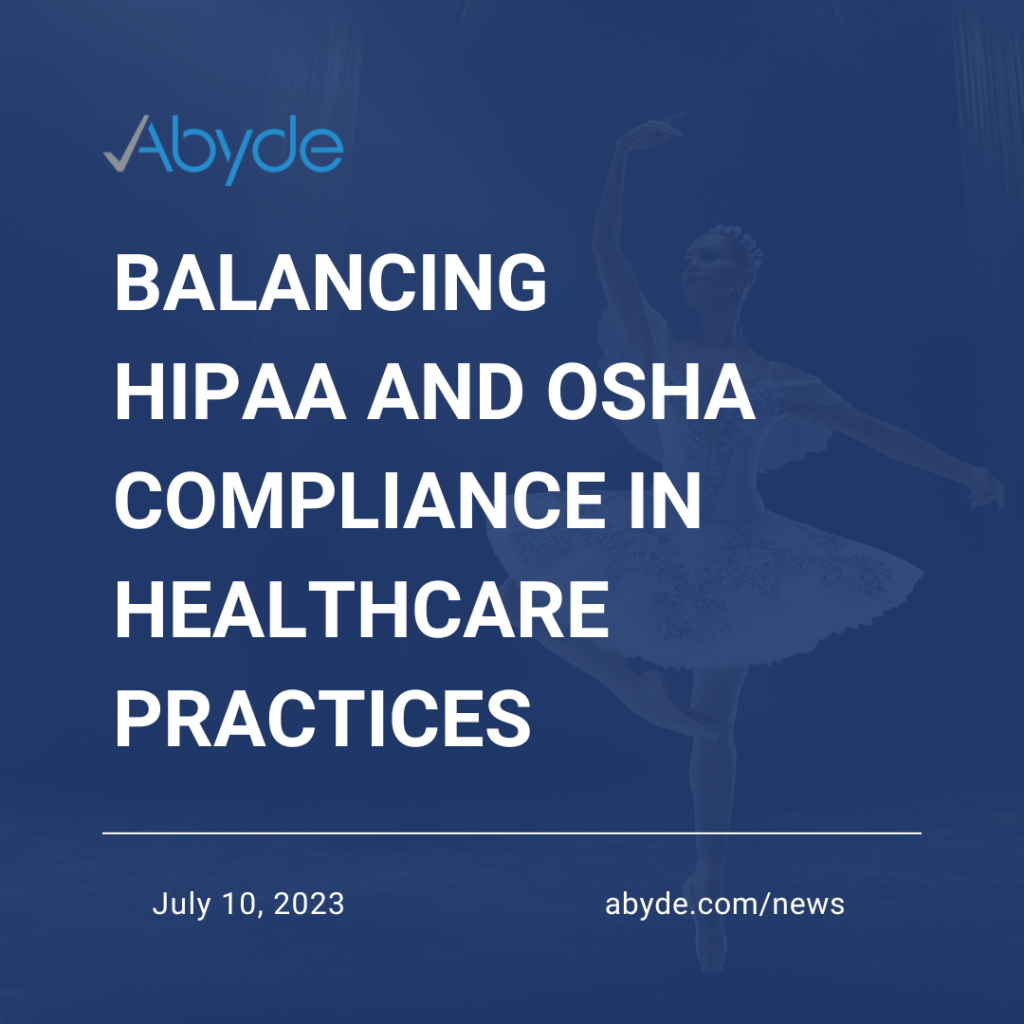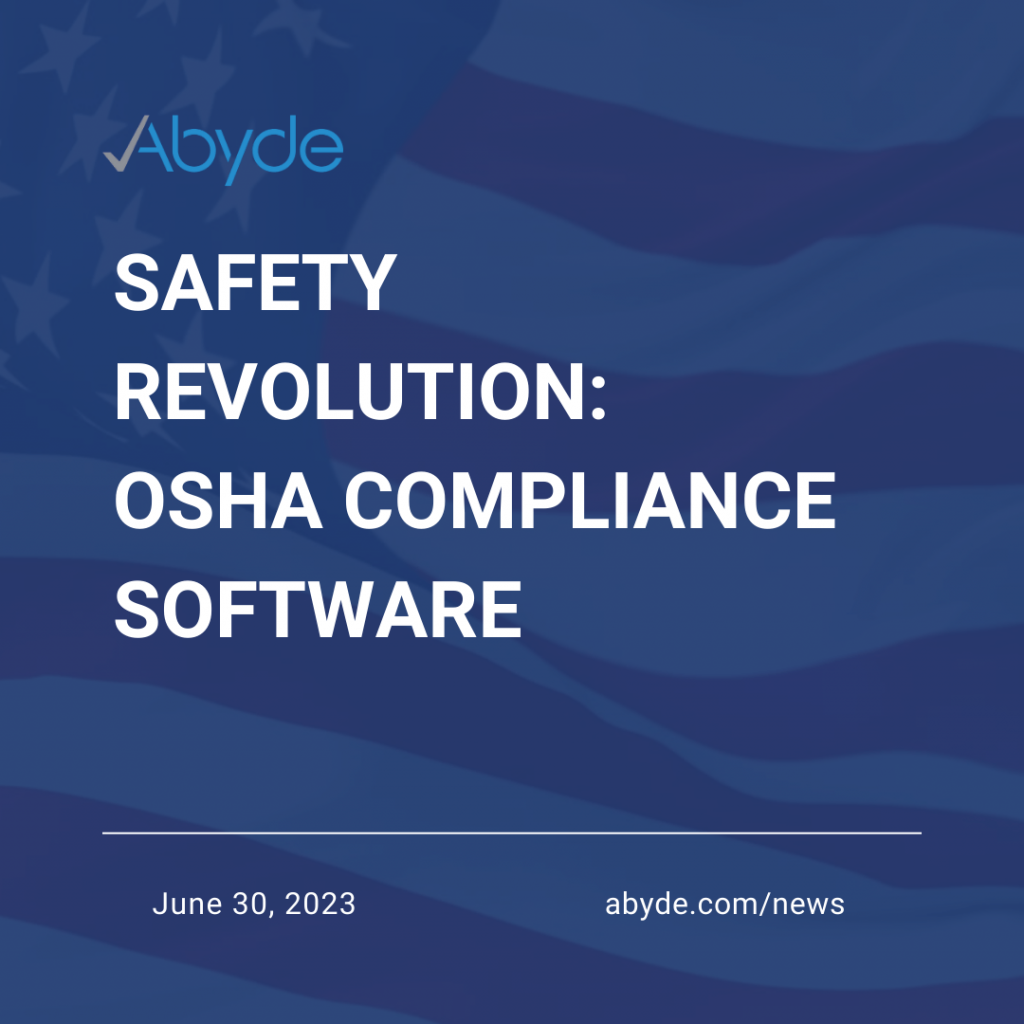July 27, 2023 In a recent investigation, the U.S. Department of Labor’s Occupational Safety and Health Administration (OSHA) discovered alarming safety lapses at a psychiatric health and substance disorder facility in Jacksonville, Florida. The facility, operating as River Point Behavioral Health, failed to implement necessary safety procedures, exposing its workers to serious risks and injuries. One incident involved a patient attacking a registered nurse, highlighting the urgent need for improved workplace safety measures. Workplace Violence Plagues Healthcare Workers The incident occurred in January 2023, when a registered nurse employed by UHS of Delaware Inc. and TBJ Behavioral Center LLC was working on reports in a staff-only workspace. Tragically, a patient gained unauthorized access to the area and physically assaulted the nurse, delivering blows to the face and head, resulting in a loss of consciousness and lacerations. This unfortunate incident highlights the growing concern about workplace violence faced by healthcare workers nationwide. OSHA’s Findings and Consequences Following the investigation, OSHA cited River Point Behavioral Health for a serious violation, holding them responsible for failing to provide a safe workplace free from recognized health and safety hazards. The agency proposed penalties amounting to $15,625. OSHA’s Area Office Director, Scott Tisdale, emphasized the importance of employers taking swift action to prevent such incidents, ensuring their employees’ physical well-being and peace of mind. A Pattern of Neglect This investigation is not an isolated incident for UHS of Delaware Inc. Since 2017, OSHA has looked into three other Florida facilities affiliated with the company due to similar complaints related to workplace violence. The pattern of neglect raises concerns about the company’s commitment to employee safety and the urgent need for comprehensive reforms. Creating Safer Work Environments Workplace violence is a pressing issue, particularly within the healthcare sector. Employers must take proactive steps to prevent and address such hazards to ensure the safety of their staff. Safety protocols, proper training, and secure workspaces are just a few measures that can significantly reduce the risks healthcare workers face on a daily basis. UHS Inc.’s Role and Responsibility River Point Behavioral Health is affiliated with UHS of Delaware Inc., which is part of UHS Inc., a prominent hospital and healthcare services system with a vast network of facilities in the U.S., Puerto Rico, and the U.K. As a major player in the healthcare industry, UHS Inc. must take the lead in advocating for improved workplace safety standards and ensuring the well-being of its employees. No organization is too big (or small) for OSHA compliance. Compliance and Future Outlook River Point Behavioral Health has 15 business days to respond to OSHA’s citations and penalties. The facility can choose to comply with the recommended changes, request an informal conference with OSHA, or contest the findings before the independent Occupational Safety and Health Review Commission. Regardless of the outcome, this investigation serves as a wake-up call for healthcare facilities nationwide to prioritize employee safety and work towards a violence-free workplace. The recent OSHA investigation sheds light on the pressing issue of workplace violence in psychiatric facilities and healthcare settings. Ensuring employee safety must become a top priority for all industry stakeholders. By implementing comprehensive OSHA compliance software like Abyde and addressing hazards promptly, we can create a work environment where healthcare workers no longer fear for their lives and physical well-being. Together, we can build a safer and more compassionate healthcare industry for patients and those who care for them.
Safeguarding Healthcare: A Lighthearted Look at Vital OSHA Regulations
July 25, 2023 In the world of healthcare, where compassion meets dedication, the safety of healthcare workers is a top priority. The Occupational Safety and Health Administration (OSHA) ensures workplace safety through specific regulations. Let’s take a light-hearted look at some of the most important OSHA regulations in healthcare settings because, after all, safety is no laughing matter! Bloodborne Pathogens Standard In the healthcare arena, our courageous heroes face the invisible threat of bloodborne pathogens. OSHA’s Bloodborne Pathogens Standard takes practical measures to protect our warriors. With exposure control plans, diligent use of personal protective equipment (PPE), and access to hepatitis B vaccinations, healthcare workers are armed and ready to tackle these potential risks. Hazard Communication Standard In the labyrinth of healthcare facilities, chemicals, and drugs may hide their true nature. OSHA’s Hazard Communication Standard brings clarity, requiring proper labeling, safety data sheets (SDS), and employee training. Our healthcare professionals can now unveil the mysteries of hazardous substances and confidently handle them. Personal Protective Equipment (PPE) While the healthcare runway may not be as glamorous as a fashion show, PPE is the latest must-have accessory for our healthcare heroes. With gloves, gowns, masks, and eye protection, they showcase the perfect blend of safety and style. PPE never goes out of fashion! Respiratory Protection – Breathing Easy In a world filled with airborne hazards, our healthcare champions need to breathe easily. OSHA’s Respiratory Protection Standard ensures a snug fit for respirators and adequate training, allowing our healthcare personnel to focus on saving lives without worrying about inhaling potential risks. Ergonomics – Comfort is Key OSHA may not have an official Ergonomics Standard, but healthcare facilities embrace the spirit of keeping their workforce safe and comfortable. From adjustable workstations to smart lifting techniques, healthcare workers are well-equipped to tackle their daily challenges. Exit Routes and Emergency Action Plans – Smooth Evacuations There’s no time for confusion when emergencies strike. OSHA’s Exit Routes and Emergency Action Plans guide healthcare workers toward safety with clearly marked pathways and well-rehearsed plans. Being prepared for the unexpected is a crucial part of OSHA training. It’s essential to remember that safety is a serious matter. The dedication and resilience of healthcare workers make our communities healthier and safer, and it’s our responsibility to provide them with a secure working environment. Abyde’s OSHA compliance software aims to simplify and streamline the process of achieving and maintaining compliance. We provide customized tools and resources to help healthcare practices, big or small, navigate the complex landscape of OSHA regulations and ensure they are in full compliance. OSHA regulations are not just bureaucratic guidelines but the backbone of protection for our healthcare heroes. From shielding against bloodborne pathogens to unmasking chemical hazards and donning the latest safety chic, OSHA ensures our healthcare workers can be safe and focused. Let’s all abyde by these vital OSHA regulations today and every day!
What’s the Difference between NIOSH and OSHA in Ensuring Workplace Safety?
July 14, 2023 When it comes to maintaining a safe and healthy work environment, two prominent agencies play a vital role in the United States: the National Institute for Occupational Safety and Health (NIOSH) and the Occupational Safety and Health Administration (OSHA). While their goals align closely, it’s essential to understand the differences between these agencies and their respective roles. Read along to dive into the dissimilarities between NIOSH and OSHA, focusing on NIOSH’s significance and its relevance to healthcare practices. NIOSH: A Sister Agency with Great Training Resources and Health Hazard Evaluations: NIOSH, a part of the Centers for Disease Control and Prevention (CDC), is often considered the sister agency to OSHA. It is responsible for conducting research, providing training resources, and making recommendations to improve occupational safety and health across various industries. One of NIOSH’s key functions is running Health Hazard Evaluations (HHEs), which involve investigating potential workplace hazards and providing recommendations for prevention and control. Certification of PPE, Respirators, and Exposure Limits: NIOSH is critical in ensuring the efficacy and safety of personal protective equipment (PPE) and respirators. It certifies these products to meet specific standards, validating their ability to protect workers from occupational hazards. Additionally, NIOSH establishes and revises exposure limits for various substances to safeguard workers’ health and minimize the risks associated with exposure to harmful agents. Interactions between NIOSH and OSHA: While NIOSH focuses on research, recommendations, and training, OSHA primarily enforces workplace safety regulations and standards. Although they operate independently, NIOSH and OSHA frequently collaborate and share information to enhance workplace safety. NIOSH’s research and recommendations often contribute to developing and revising OSHA’s standards, providing a scientific basis for regulations. NIOSH’s Relevance to Healthcare Practices: NIOSH’s expertise is highly relevant to healthcare practices due to the unique occupational hazards healthcare workers face. From exposure to infectious diseases to chemical and biological threats, healthcare professionals work in environments where safety is paramount. NIOSH provides valuable resources, guidelines, and research findings specifically tailored to the healthcare industry, aiming to protect healthcare workers and ensure their well-being. The Importance of ANSI (Laser Standards): Apart from NIOSH and OSHA, the American National Standards Institute (ANSI) also plays a crucial role in workplace safety. ANSI develops and publishes voluntary consensus standards for various industries, including laser safety. These standards provide guidance on the safe use of lasers, ensuring protection against potential hazards such as eye injuries and skin burns. Adhering to ANSI’s laser standards is essential for organizations to maintain a safe working environment. IDLH: Not an Organization but a Standard: It’s important to note that IDLH (Immediately Dangerous to Life or Health) is not an organization but a standard used to define hazardous conditions that pose an immediate threat to human life or health. NIOSH establishes IDLH values for various substances, helping organizations identify situations where respiratory protection and prompt action are necessary to prevent serious harm to workers. NIOSH and OSHA are two distinct but interconnected agencies that are vital in promoting workplace safety in the United States. While NIOSH focuses on research, recommendations, and training, OSHA’s primary responsibility is enforcing regulations and standards. NIOSH’s expertise and resources, such as its training materials, Health Hazard Evaluations, and certifications of PPE and respirators, make it an essential agency for maintaining a safe work environment. Healthcare practices, in particular, greatly benefit from NIOSH’s tailored guidelines and research findings. By understanding the distinctions between NIOSH and OSHA, organizations can leverage the strengths of both agencies to ensure the well-being of their workers and foster a culture of safety.
Balancing HIPAA and OSHA Compliance in Healthcare Practices
July 10, 2023 Compliance requirements can sometimes feel like a dance routine, and for healthcare practices, the choreography involves the overlapping steps of HIPAA and OSHA. Striking the right balance between protecting patient privacy and ensuring employee safety can be challenging but crucial. Here are some practical steps healthcare practices can take to navigate the convergence of HIPAA and OSHA compliance without drama or theatrics. Understanding HIPAA and OSHA: 1. HIPAA Compliance: HIPAA stands as the guardian of patient privacy and data security. It sets the standards for electronic transactions, privacy rules, and security measures. Healthcare providers, health plans, and clearinghouses are obligated to implement safeguards to protect sensitive health information. 2. OSHA Compliance: OSHA is responsible for maintaining a safe and healthy working environment for employees across all industries, including healthcare. It focuses on identifying workplace hazards, providing safety training, and ensuring proper record-keeping for occupational injuries and illnesses. Managing the Overlap: 1. Assess Risks: Begin by conducting a thorough risk assessment considering HIPAA and OSHA requirements. Identify potential areas where these compliance realms intersect, such as situations where employee safety might come into contact with patient information. 2. Develop Policies and Procedures: Craft policies and procedures that encompass both HIPAA and OSHA compliance. Ensure they address privacy, security, patient safety, employee training, and hazard prevention. Strive for clear and concise guidelines that are easily understood by staff. 3. Employee Education and Training: Educate and train your employees on both HIPAA and OSHA regulations. Empower them with the knowledge to protect patient privacy and maintain a safe workplace. Integrate training sessions that highlight the areas of overlap, emphasizing the importance of handling sensitive data in a secure manner. 4. Safeguarding Patient Privacy: Implement measures to protect patient privacy while maintaining a safe work environment. Establish designated areas for confidential discussions and restrict access to authorized personnel only. Remember, the aim is to achieve a balance that safeguards patient information without compromising employee safety. 5. Workplace Safety: Regularly assess the physical environment for potential hazards and implement protocols to address them promptly. Focus on proper storage and disposal of hazardous materials, ergonomics, and infection control practices. Encourage a safety culture that promotes vigilance and preventative measures. 6. Incident Reporting and Documentation: Establish a streamlined process for reporting incidents that may involve both patient information and employee safety. Emphasize the importance of accurate documentation while maintaining patient confidentiality. Clear reporting procedures help identify areas for improvement and drive proactive safety measures. 7. IT Security: Maintain robust IT security measures to protect electronic patient health records from unauthorized access or breaches. Stay vigilant with software updates, conduct regular risk assessments, and educate employees on best practices for data security and privacy. 8. Compliance Audits and Monitoring: Regularly conduct compliance audits to ensure adherence to both HIPAA and OSHA requirements. Monitor compliance, review incident reports, and identify areas that need improvement. Assign designated staff members to oversee compliance efforts and keep the focus on continuous improvement. Finding a rhythm between HIPAA and OSHA compliance is essential for healthcare practices striving to protect patient privacy while maintaining a safe working environment. By assessing risks, developing comprehensive policies, and providing education and training, healthcare organizations can achieve the delicate balance required. Compliance doesn’t need to be a stressful rehearsal for things to go wrong. It’s a practical endeavor that protects both patients and employees alike. At Abyde, we strive for a harmonious dance where patient privacy and workplace safety are the show’s stars. Our revolutionary software bundles HIPAA & OSHA compliance for healthcare, making the balancing act of compliance easy for practices.
Safety Revolution: OSHA Compliance Software
June 30, 2023 Just as the American Revolution transformed history, a new revolution is taking place within workplace safety in healthcare. No need to dump tea in a harbor or worry about British troops; this time, it’s Abyde revolutionizing the power of Occupational Safety and Health Administration (OSHA) compliance with software that is empowering practices to ignite a safety revolution of their own. OSHA compliance software is leading the charge in transforming safety protocols, just as the American Revolution forever changed the landscape of nations. Declaration of Compliance Independence Similar to the Declaration of Independence, which boldly stated the rights and freedoms of the American people, Abyde’s OSHA compliance software established a new declaration of compliance independence for healthcare organizations. With its streamlined documentation and record-keeping capabilities, practices can be liberated from the shackles of manual paperwork. Digital tools enable the centralization of safety data, maintenance of accurate record keeping, and empowerment to exercise compliance efficiently and confidently. Safety Patriots OSHA is the king of workplace safety, but we’re not fighting it! Implementing OSHA compliance software creates a league of safety patriots within practices. Real-time monitoring and reporting features provide a vigilant eye on workplace safety, equipping organizations to identify and address hazards promptly. Revolutionary Training Camps OSHA compliance software like Abyde’s establishes revolutionary-battle-worthy training camps within practices. Comprehensive training modules and educational resources equip employees with the knowledge and skills to champion workplace safety. Ongoing training cultivates a sense of responsibility. It empowers employees to participate in their own safety actively. Regulatory Patriots The American Revolution fought against oppressive rule and unfair regulations. OSHA empowers organizations to become regulatory patriots. By automating the monitoring of regulatory changes and providing timely updates and notifications, Abyde ensures that practices stay informed and compliant. This ability to adapt and navigate the regulatory landscape helps practices avoid compliance lapses and assert their independence in maintaining a safe working environment. United Front During the American Revolution, unity was crucial for successfully crushing the British. Abyde’s OSHA compliance software fosters a united front for safety in healthcare. Collaborative tools within the software such as risk assessments, custom safety policy and procedure generation, record maintenance, and employee training enable seamless communication and coordination. This united front for safety ensures that every individual is invested in the well-being of their colleagues, just as the Americans did in pursuit of freedom. As the American Revolution paved the way for a new era of governance, Abyde’s revolutionary OSHA compliance software is transforming workplace safety practices in healthcare. Not by fighting a monarchy across the sea but by freeing organizations from the burden of manual compliance, OSHA revolutionizes safety in the modern workplace. Embracing the spirit of independence, practices can create an environment where safety is prioritized, accidents are minimized, and employees can thrive.
OSHA, Hurricanes, and Healthcare
June 22, 2023 Many of us are in the midst of yet another hurricane season. These tropical cyclones can blow healthcare safety plans straight into the eye of the storm. As such, it’s vital to understand and implement Occupational Safety and Health Administration (OSHA) safety guidelines to keep our healthcare facilities safe. Each year OSHA gears up, ready to guide healthcare workers through the challenges that storms can stir up. In healthcare during hurricane season, the term ‘all hands on deck’ is less of a naval cliché and more of an everyday reality. Hurricane Hygiene Hospitals and healthcare facilities are expected to be beacons of cleanliness. But when a hurricane is flinging everything from gators to garden gnomes, how can one maintain this? OSHA sweeps in with protocols for everything from biological hazards to chemical spills. They’ve got the full spectrum covered: personal protective equipment (PPE), cleaning protocols, and post-storm infectious disease prevention. Power Outages OSHA’s emergency response guidelines are there to protect medical practices in the eye of the storm. Backup generators are checked, and contingency plans are laid out. They’re ensuring medical machines keep humming and vital signs keep beeping even when the sun doesn’t shine. Evacuation Hurricanes are notorious for their grand entrances, sometimes making evacuation necessary for safety. In the midst of an already chaotic situation, evacuating a healthcare facility can be daunting. Thankfully, OSHA stepped in again with clearly outlined evacuation plans and meticulous headcounts. The aim? Safety, order, and zero left behind. Return After the storm has passed, there’s the matter of recovery and return. OSHA’s disaster recovery guidance guarantees that the process is safe and orderly. OSHA’s practical guidance on inspecting structural damages, identifying potential hazards, and safely resuming services transforms this monumental task into a systematic process that puts patients’ and healthcare providers’ safety first and foremost. Abyde It’s pretty apparent why healthcare organizations should abyde by OSHA regulations, especially surrounding hurricane season. Abyde’s software solution makes maintaining compliance a breeze – even when the hurricane winds are gusting. Are you ready to make healthcare compliance stress-free, even in the face of a storm? Don’t weather it alone. Embark on your journey with Abyde today, and let us steer your practice to the tranquil shores of compliance.
Ensuring a Healthy and Safe Medical Environment: The Importance of OSHA Compliance in Small to Midsize Medical Practices
June 1, 2023 When thinking about medical practice compliance, the first thing that likely comes to mind is HIPAA, patient confidentiality, and related healthcare regulations. While these areas are undeniably crucial, there’s another regulatory authority that should never be overlooked, even in the smallest of medical practices: the Occupational Safety and Health Administration (OSHA). OSHA sets and enforces standards that help manage these hazards and provide safe working environments. But why is OSHA compliance so essential for small to midsize medical practices? A Culture of Safety OSHA compliance is not just about following regulations—it’s about creating a culture of safety. This promotes a sense of well-being among employees, which, in turn, fosters better patient care. Studies have shown that safe, happy employees are more engaged and productive, which is essential in a patient-centric industry like healthcare. Protection Against Occupational Hazards Medical professionals are exposed to an array of occupational hazards. OSHA standards aim to protect employees from potential threats such as exposure to infectious diseases, hazardous drugs, ionizing radiation, and more. By complying with OSHA standards, small to midsize medical practices can ensure the well-being of their staff, leading to reduced absences, lower turnover, and increased employee satisfaction. Legal and Financial Implications Non-compliance with OSHA regulations can lead to hefty fines and legal consequences. Small to midsize practices might not have the financial resilience to deal with such penalties, which can range from thousands to hundreds of thousands of dollars. Additionally, non-compliance can result in lawsuits, tarnished reputation, and even closure of the practice. Maintaining Trust Patients entrust healthcare providers with their lives and well-being. If a medical practice fails to comply with OSHA regulations, it can significantly damage the trust built between the healthcare provider and their patients. Adherence to OSHA standards sends a clear message to patients that their safety, as well as the safety of the staff providing their care, is a top priority. Staying Ahead of Changes Healthcare is an ever-evolving field with new technologies, treatments, and threats emerging regularly. OSHA compliance ensures that medical practices are staying ahead of these changes, preparing for new hazards, and continuously improving their safety protocols. In conclusion, the importance of OSHA compliance in small to midsize medical practices cannot be overstated. It fosters a culture of safety, protects against occupational hazards, saves potentially significant legal and financial costs, maintains patient trust, and keeps the practice prepared for changes. Given the high stakes of medical care, these benefits show why OSHA compliance should be seen as a non-negotiable element of running a successful, responsible, and trustworthy medical practice. Abyde’s software offers a comprehensive solution that helps small to midsize practices manage their OSHA compliance needs effectively. The platform delivers continuous updates in line with OSHA changes and standards, provides training for employees, and includes risk analysis features. In doing so, it minimizes the potential for costly penalties while allowing healthcare providers to focus on what they do best: providing top-quality care for their patients. Investing in OSHA compliance is an investment in the well-being of your staff, your patients, and the long-term success of your practice. Choose Abyde today, and step into a future where regulatory compliance and optimal patient care are completely stress-free.
Million-Dollar General
May 25, 2023 In a series of inspections that can only be described as “Oops, they did it again,” the U.S. Department of Labor discovered unsafe conditions at nine Dollar General stores across four states: Maine, North Dakota, Ohio, and Wisconsin. The Occupational Safety and Health Administration (OSHA) has proposed a whopping $3.4 million in penalties for these violations, adding to the already staggering $21 million in fines that Dollar General has accumulated since 2017. It turns out that Dollar General stores have a knack for blocking everything that’s meant to keep employees safe. Federal safety inspectors often find aisles blocked by stacks of merchandise, emergency exits obstructed, fire extinguishers hidden from view, and electrical panels buried under a mountain of boxes. To make matters worse, these unsafe conditions exposed Dollar General employees to risks like fire, electrical shocks, and getting struck by falling merchandise. Yikes! Assistant Secretary for Occupational Safety and Health, Doug Parker, had some choice words for DG saying, “Dollar General continues to expose its employees to unsafe conditions at its stores across the nation. As one of the nation’s largest retailers, the company must focus its attention on resolving these issues and making corporate-wide changes to protect the safety and well-being of the people they employ.” Take a look at some of the details of the million-dollar mishaps: Enfield, Maine In November 2022, OSHA found emergency exits blocked by rolling containers and boxes. They also discovered carts clogging the aisles, preventing quick access to fire extinguishers. To top it off, the store had goods stacked unsafely up to 6 feet high around an electrical panel. Oh, and the fire extinguishers hadn’t been visually inspected as required. OSHA slapped DG Retail LLC, the operator of the Enfield store, with five repeat violations and proposed $321,419 in penalties. Casselton, Garrison, Hillsboro, Killdeer, Minot, and Tioga, North Dakota State fire marshals and concerned citizens tipped off OSHA about hazardous conditions at Dollar General stores in North Dakota. Inspections between October and December 2022 revealed blocked exit routes, doors, fire extinguishers, and electrical panels. In Minot, things took an even scarier turn when six employees were exposed to toxic vapors after chemical containers ruptured. OSHA cited Dollar General for failing to provide adequate protection, training, and clean-up procedures. The result? 32 violations in just two months and an astonishing $2.5 million in proposed penalties. Kettering, Ohio In November 2022, OSHA descended upon a Dollar General store in Kettering, only to find exit routes, fire extinguishers, and electrical panels blocked by merchandise and other materials. Talk about a safety hazard! OSHA wasn’t laughing and issued citations for three repeat violations, amounting to $270,116 in proposed penalties. Kewaunee, Wisconsin Responding to a complaint about unsafe working conditions, OSHA discovered a disturbing scene in Kewaunee. Exit routes, fire extinguishers, and electrical panels were blocked by unsafe stacks of merchandise – sound familiar?? OSHA didn’t hold back and issued citations for four repeat and four willful violations, including unsafe electrical cords, uninspected fire extinguishers, and crushing hazards. OSHA proposed $367,216 in penalties. In conclusion, Dollar General Corp. and Dolgencorp LLC have made a name for themselves in the world of workplace safety violations. They’ve even earned a prestigious spot in OSHA’s Severe Violator Enforcement Program. With a jaw-dropping tally of 19,000 stores and 28 distribution centers in 47 states, they sure know how to spread the joy of hazardous working conditions far and wide. Laughter is the best medicine, but workplace safety is no joke. Let’s hope Dollar General finally gets its act together and stops turning their stores into a circus of safety fails. Until then, let’s all stay safe and keep our exit routes clear of discounted merchandise!
Heads Up: Dodge These Top OSHA Violations!
February 14, 2024 Hey there! Ever heard of OSHA? Think of them as the workplace safety cheerleaders, ensuring everyone stays healthy and happy at work. Ensuring a safe and healthy workplace is paramount for our heroes on the frontlines. Let’s delve into the top OSHA violations to see what you need to avoid and prioritize workplace safety: Bloodborne Pathogen Management: Proper handling of blood and bodily fluids is crucial, with appropriate PPE and training mandated for everyone’s protection. Respiratory Protection: Implement proper respirators and ventilation systems to safeguard staff from airborne contaminants and ensure optimal respiratory health. Personal Protective Equipment (PPE) Utilization: Equipping everyone with the correct PPE and ensuring its proper use and maintenance creates a vital barrier against workplace hazards. Recordkeeping Meticulousness: Maintaining accurate and timely records of injuries, illnesses, and safety hazards facilitates proactive risk identification and mitigation strategies. Lockout/Tagout Procedure Implementation: Prevent accidental equipment activation by strictly adhering to established lockout/tagout procedures during maintenance activities. Remember, adhering to these guidelines fosters a safer and healthier environment for everyone, ultimately contributing to a thriving healthcare ecosystem. Let’s prioritize safety and empower your practice to shine! Thankfully, Abyde can help your practice avoid these common OSHA violations. Our revolutionary OSHA for Healthcare software includes entertaining training, dynamically generated documentation, a thorough facility risk assessment, and much more! To learn more about how you can simplify your practice’s compliance, contact us at info@abyde.com and schedule a demo here.
Inflation Strikes on Eggs and OSHA Fines
January 13, 2023 To keep up with inflation and the ever-changing cost-of-living adjustments, the U.S. Department of Labor announced changes to Occupational Safety and Health Administration (OSHA) civil penalty amounts today. As part of a Congressional act passed in 1990, the Federal Civil Penalties Inflation Adjustment Act, and amended by the Federal Civil Penalties Inflation Adjustment Act Improvements Act of 2015, the Department completes an annual review by January 15th to evaluate and adjust civil money penalty levels against inflation. We can expect the new penalty amounts, shown below, to take effect on January 17, 2023. Currently, penalties for serious and other-than-serious violations are $14,502 per violation. With the recent update, we are seeing over a $1,000 increase to $15,625. Repeated violations aren’t getting a break either with an increase to $156,259 per violation from the previous $145,027. Type of Violation Penalty SeriousOther-Than-SeriousPosting Requirements $15,625 per violation Failure to Abate $15,625 per day beyond the abatement date Willful or Repeated $156,259 per violation Curious about state-specific updates? Per the U.S. Department of Labor, states that operate their own OSHA Plans are required to adopt maximum penalty levels that are at least as effective as Federal OSHA’s. State Plans are not required to impose monetary penalties on state and local government employers. This new rule goes into effect on January 15, 2023. It will apply to any penalties assessed after January 15, 2023. Before you go egging the next OSHA enforcement officer you come in contact with, remember that these annual updates are in place to remind you of the importance of maintaining a safe and healthful work environment.
